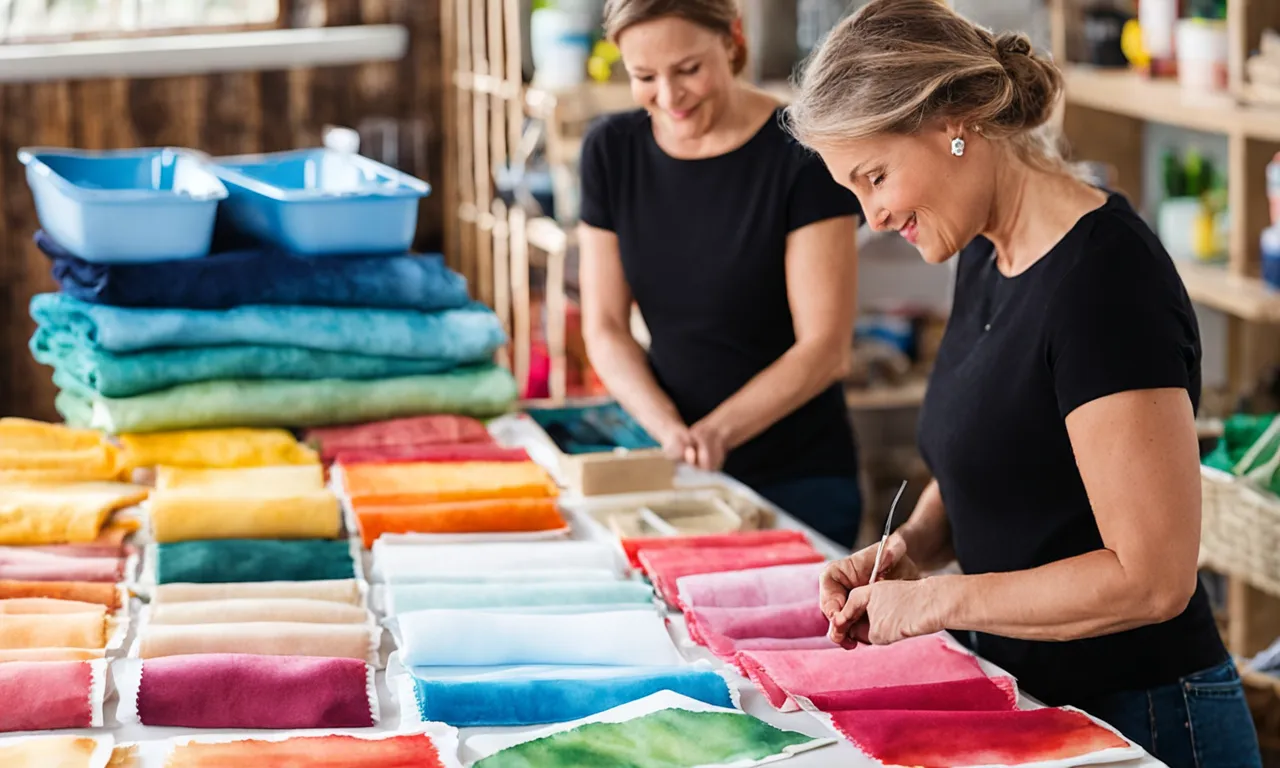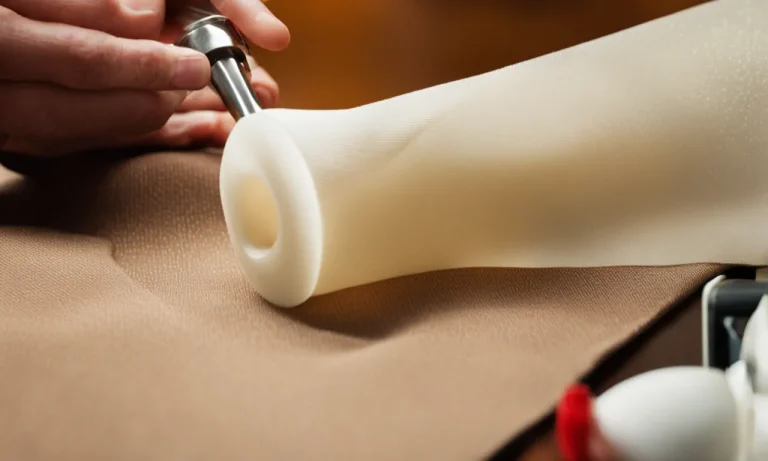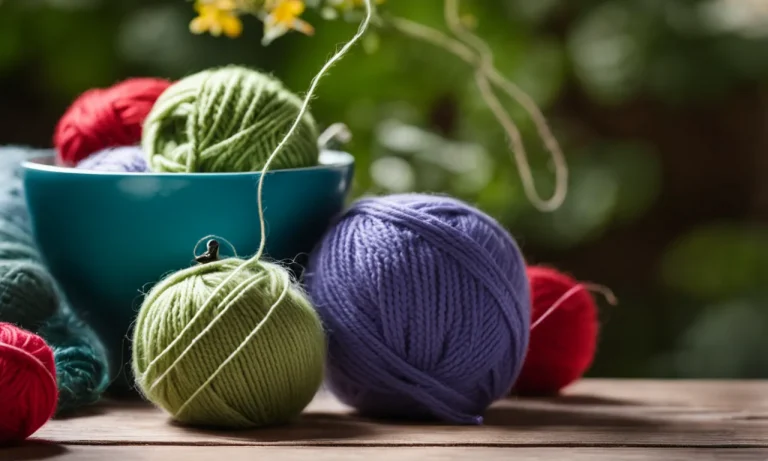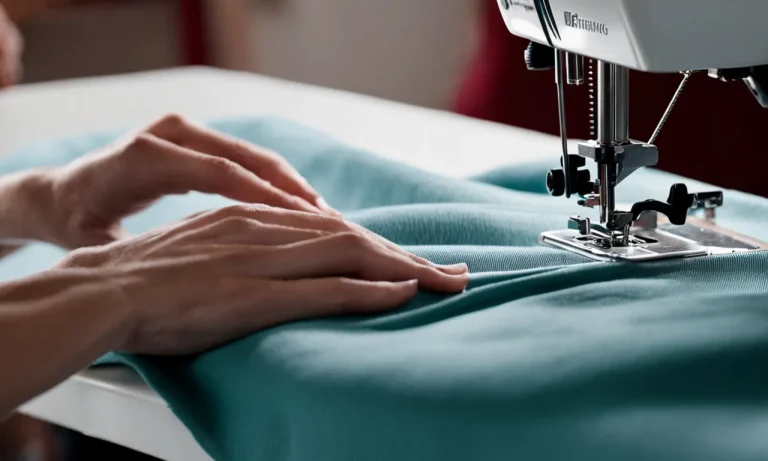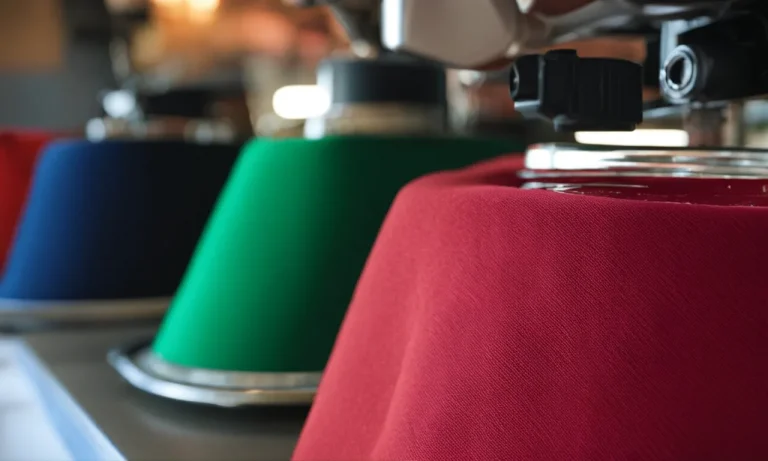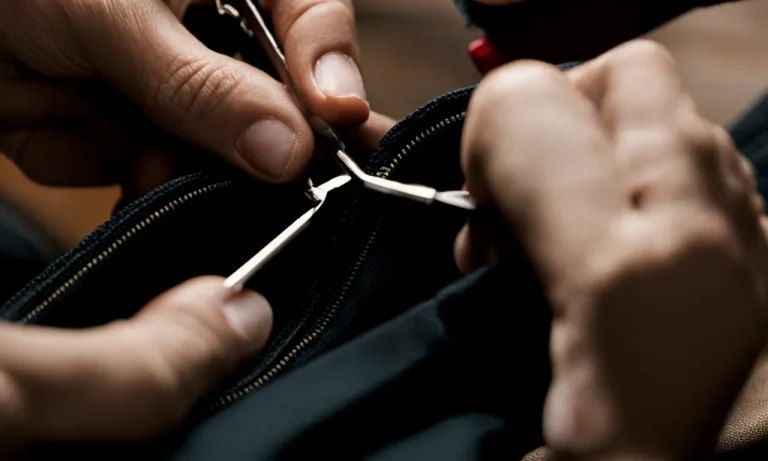Will Watercolor Paint Stay On Fabric? A Detailed Guide
Watercolor painting on fabric is a fun and creative way to make beautiful works of art. But will the paint actually stay on the fabric or will it wash out? If you’re short on time, here’s a quick answer to your question: Watercolor paint can stay on fabric if you prepare the fabric properly before painting and seal the paint afterward to make it more colorfast.
The specifics depend on the type of fabric painted.
In this comprehensive guide, we’ll cover everything you need to know about using watercolor on fabric successfully. We’ll discuss how to prepare different types of fabric for painting, techniques for applying the paint, ways to set the paint so it stays vibrant through washing, and tips for getting great results when using watercolors on fabric projects.
Preparing Fabric for Watercolor Paints
Before you start painting with watercolors on fabric, it is important to properly prepare the fabric to ensure that the paint adheres well and lasts long. Here are some essential steps to follow:
Washing and Ironing the Fabric
The first step in preparing fabric for watercolor paints is to wash it. This removes any dirt, chemicals, or sizing that may be present on the fabric. Use a mild detergent and gently hand wash the fabric in cold water. Avoid using bleach or harsh chemicals as they can damage the fabric.
After washing, rinse the fabric thoroughly and let it air dry.
Once the fabric is dry, it is important to iron it to remove any wrinkles. Set your iron to the appropriate heat setting for the fabric type and gently press the iron over the fabric. This not only smooths out any wrinkles but also helps to create a smooth surface for the paint to adhere to.
Using Sizing on the Fabric
Sizing is a substance that is applied to fabric to make it more resistant to water and to help the paint adhere better. It creates a barrier between the fabric and the paint, preventing the colors from bleeding and spreading too much.
Sizing can be applied by either spraying it onto the fabric or by soaking the fabric in a sizing solution.
There are different types of sizing available in the market, so it is important to choose one that is suitable for the fabric you are using. Some sizings are specifically designed for watercolor paints, so look for those if possible.
Follow the instructions provided by the manufacturer for the best results.
Choosing the Right Fabrics
The choice of fabric plays a crucial role in determining how well the watercolor paint will adhere and stay on the fabric. Certain fabrics are more suitable for watercolor painting than others. Cotton and linen fabrics are popular choices as they have a natural absorbency that allows the paint to soak into the fibers and create vibrant colors.
It is recommended to avoid synthetic fabrics such as polyester or nylon, as they have a smoother surface that makes it difficult for the paint to adhere properly. However, if you still want to paint on synthetic fabrics, you can use a fabric medium or primer to improve the adhesion of the paint.
Remember to always test your watercolor paints on a small swatch of fabric before starting your project. This will give you an idea of how the paint will react and adhere to the fabric, helping you make any necessary adjustments before painting on a larger surface.
For more detailed information on fabric preparation for watercolor painting, you can refer to silverspringstudio.com which provides expert tips and techniques for achieving the best results.
Applying Watercolor Paint to Fabric
Watercolor paint is a versatile medium that is commonly used on paper, but can it be used on fabric? The answer is yes! With the right techniques and materials, you can create beautiful watercolor designs on fabric that will stay vibrant and long-lasting.
Here is a detailed guide on how to apply watercolor paint to fabric.
Brushes and Other Tools for Painting
When it comes to applying watercolor paint to fabric, using the right brushes and tools is essential. It is recommended to use soft brushes with synthetic bristles, as they will allow for better control and smoother application of the paint.
Additionally, having a spray bottle filled with water can be helpful for adding water to the paint and achieving different effects.
Letting the Paint Dry Thoroughly
After applying the watercolor paint to fabric, it is important to let it dry thoroughly before moving or handling the fabric. This will ensure that the paint adheres properly to the fabric and reduces the risk of smudging or smearing.
Depending on the humidity and temperature, it may take a few hours or even overnight for the paint to fully dry.
Tips for Achieving Crisp Edges and Solid Coverage
When working with watercolor paint on fabric, achieving crisp edges and solid coverage can be a challenge. Here are some tips to help you achieve the best results:
- Pre-wet the fabric with water before applying the paint to help the colors blend more easily.
- Use masking tape or stencil to create clean boundaries for your design.
- Layer the paint to achieve more vibrant and opaque colors.
- Avoid scrubbing or rubbing the paint too vigorously, as this can damage the fabric.
Remember, practice makes perfect when it comes to watercolor painting on fabric. Don’t be afraid to experiment with different techniques and color combinations to create your own unique designs. With time and patience, you can create stunning watercolor art on fabric that will last for years to come.
Sealing the Paint After it Dries
Once you have finished painting with watercolor on fabric, it is important to seal the paint to ensure its longevity. Sealing the paint not only protects it from fading or washing off but also helps to maintain the vibrancy of the colors.
There are several methods you can use to seal watercolor paint on fabric, including using a fabric medium or sealant, heat setting with an iron, and considering the fabric color.
Using a Fabric Medium or Sealant
One effective way to seal watercolor paint on fabric is by using a fabric medium or sealant. Fabric mediums are specially designed to be mixed with watercolor paint, making it more suitable for fabric application.
They help to bind the paint to the fabric fibers, preventing it from washing off easily.
When using a fabric medium, simply mix it with your watercolor paint according to the manufacturer’s instructions. This will create a more durable and flexible paint that adheres well to the fabric. After applying the paint, allow it to dry completely before moving on to the next step.
Once the paint is dry, you can further enhance its longevity by applying a fabric sealant. Fabric sealants create a protective barrier over the paint, making it resistant to fading, washing, and general wear and tear.
Simply follow the instructions on the sealant product and apply it evenly over the painted area. Allow it to dry completely before using or washing the fabric.
Heat Setting with an Iron
Another method to seal watercolor paint on fabric is by heat setting it with an iron. This method is particularly useful for fabrics that cannot be washed or for projects that require immediate use.
To heat set the paint, place a clean cloth or paper towel over the painted area. Set your iron to the appropriate heat setting for the fabric type (refer to the fabric’s care instructions). Gently iron over the cloth or paper towel, applying even heat and pressure for about 3-5 minutes.
This will help to heat bond the paint to the fabric, ensuring its longevity.
Considerations for Dark vs. Light Fabrics
When sealing watercolor paint on fabric, it is important to consider the color of the fabric. Dark-colored fabrics tend to hide imperfections and inconsistencies in the paint, making the sealing process less critical.
However, for light-colored fabrics, it is essential to seal the paint properly to prevent any bleeding or fading.
Additionally, light-colored fabrics may require multiple layers of paint to achieve the desired vibrancy. In this case, it is crucial to allow each layer to dry completely and seal the paint before applying the next layer.
This will help to prevent the colors from blending together and maintain the integrity of the design.
Remember, sealing the watercolor paint on fabric is an important step to ensure its longevity and durability. By using a fabric medium or sealant, heat setting with an iron, and considering the fabric color, you can effectively seal the paint and enjoy your watercolor creations on fabric for years to come.
Caring for the Finished Piece
Once you have created a beautiful watercolor painting on fabric, you’ll want to ensure that it stays vibrant and intact for as long as possible. Proper care is essential to maintain the quality of your artwork. Here are some important tips for caring for your finished piece:
Hand Washing vs. Machine Washing
When it comes to washing your watercolor painted fabric, it’s generally recommended to hand wash it rather than machine wash. Hand washing allows you to have more control over the process and reduces the risk of damage. Fill a basin or sink with cold water and add a gentle detergent.
Gently swish the fabric in the water, making sure not to scrub or rub it vigorously. Rinse thoroughly and squeeze out the excess water. Avoid using bleach or harsh chemicals as they can fade or damage the paint. After washing, lay the fabric flat to dry.
Drying Flat to Avoid Distortions
It is important to dry your watercolor painted fabric flat to avoid any distortions or stretching. Lay the fabric on a clean, dry towel or a mesh drying rack. Smooth out any wrinkles or creases gently with your hands.
Avoid hanging the fabric to dry as it can cause the paint to drip and create uneven patterns. Additionally, hanging can lead to stretching or warping of the fabric, affecting the overall appearance of your artwork.
Touching Up Paint as Needed
Over time, the paint on your watercolor fabric painting may fade or wear off in certain areas. To keep your artwork looking fresh and vibrant, you can touch up the paint as needed. Use a fine-tipped brush and the same colors as the original paint to carefully fill in any areas where the paint has faded or chipped away.
Take your time and blend the new paint with the existing colors to ensure a seamless finish. Allow the touched-up areas to dry completely before handling or washing the fabric again.
Caring for your watercolor painted fabric requires a gentle touch and attention to detail. By hand washing, drying flat, and touching up the paint as needed, you can ensure that your artwork stays beautiful for years to come.
Achieving the Best Results with Watercolors on Fabric
Watercolor paint can indeed be used on fabric to create beautiful and unique designs. However, there are certain factors to consider in order to achieve the best results. By following these guidelines, you can ensure that your watercolor paint stays on fabric and creates a lasting impression.
Choosing the Right Paints and Brushes
When it comes to using watercolors on fabric, it is important to choose the right type of paint. Look for fabric-specific watercolor paints that are designed to adhere to different textile fibers. These paints are usually labeled as “fabric watercolors” or “textile paints.”
They have specific additives that allow them to bond effectively with fabric, ensuring that the colors remain vibrant and long-lasting.
In addition, selecting the right brushes is crucial for achieving the desired effect. Opt for brushes with soft bristles that can hold enough water and pigment. This will allow you to create smooth and even strokes on the fabric.
Using Simple, Bold Designs
When painting on fabric with watercolors, it is best to use simple and bold designs. Intricate details may not translate well onto fabric, as the paint can bleed and spread. Instead, opt for larger shapes and designs that can make a strong visual impact.
Consider using stencils or tracing your design onto the fabric beforehand to ensure precision. This way, you can focus on applying the colors without worrying about the design itself.
Allowing for Some Minor Bleeding of Colors
One characteristic of watercolor paint is its ability to bleed and spread. While this can create beautiful effects, it is important to be mindful of it when using watercolors on fabric. Accepting some minor bleeding of colors can actually enhance the overall aesthetic of your design.
To control the bleeding, try wetting the fabric with water before applying the paint. This can help the colors spread in a controlled manner. Additionally, using less water in your brush or applying multiple layers of paint can also reduce excessive bleeding.
It is worth mentioning that some bleeding may still occur even with careful application. Therefore, it is advisable to do a test run on a small piece of fabric before working on your final project.
Conclusion
With the right preparation, application techniques, and sealing methods, watercolor paint can create stunning, lasting works of art on fabric. Just be sure to choose fabrics wisely, allow paint to fully dry, and properly seal finished pieces.
Understanding the medium and taking a few precautions will allow you to safely machine or hand wash your fabric painting without colors bleeding or distorting. So grab your favorite watercolors and textile canvas and start painting – you can feel confident your artwork will withstand the test of time if you follow these tips!
We hope this comprehensive guide gives you all the details you need to successfully use watercolor on any fabric project. Let us know if you have any other questions!

